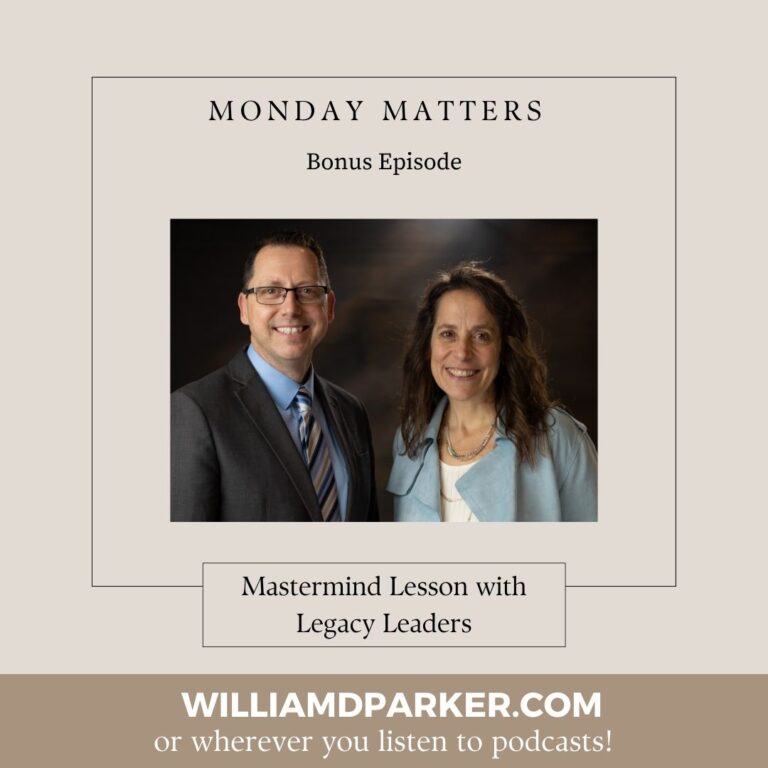Podcast: Play in new window | Download
The other day, a principal friend emailed me this question:

>>Will, I’d like your thoughts on something I grapple with: that is the importance I place on staff approval of what I do or present…the need to be liked I know is crazy and irrational, but how do you deal with the knock back, hearing a negative comment or ignoring the nay-sayers etc.?<<
First of all, that is an honest question. I think all of us deal with the tension of wanting to create the best possible environment while also facing the fact that we sometimes disappoint others or fail to motivate them.
And sometimes we need to be willing to go another direction than others, especially if it means we choose to do what is right. But I think there are often two sides to the “school culture coin,” so let’s look three points to consider when weighing the options of leading with courage while also building consensus.
3 Tips for Responding to Pushback
1. First, creating an environment of teamwork, collegiality, and togetherness is a big part of productivity.
In Principal Matters Podcast, Episode 041, I refer to a TedTalk by Margaret Heffernan who speaks about the research of William Muer. In Muer’s experiments with laying hens, he theorized that if he could isolate the best layers from flocks of chickens into a group of “super chickens,” then he guessed he could create a “super flock” of productive layers. What he found instead was that chickens in untouched flocks outperformed his “super chickens” because the exceptional layers tried to peck one another to death.
In Heffernan’s speech, she explains how this lesson also applies to her research on what makes a productive team of people. Her research shows that highly productive teams have three components:
• They show high degrees of social sensitivity to one another.
• They are groups who give equal time to each other without one voice dominating and with no “passengers” on the team.
• The more successful groups had more women on them.
Productivity and teamwork go hand in hand. So, it should concern us when others go negative. At the same time, by showing openness to others’ opinions, giving equal time to hearing many perspectives, and including a diverse group of voices, we increase the possibility that others feel a part of decision-making.
2. Building an environment of teamwork often means helping others to look outside of their own interests.
There are lots of ways to illustrate this, but let me tell you the story of a basketball team. I once heard a podcast conversation between Tim Elmore and Don Yaeger where Yeager told the story of Coach Mike Krzyeski, Duke’s legendary basketball coach who was asked to coach the men’s Olympic basketball team.
Coach K knew these elite professional athletes would be a combination of both talent and egos. As a way to help them build teamwork, he took them to Arlington Cemetery near Washington, D.C. While they toured the graves, he walked them by the section of newest graves, and they saw markers of men and women close to their own ages who had died overseas.
Then they saw a young man who was standing by the graves. He was dressed in civilian clothes but looked the part of a soldier. Coach K asked him why he was placing photos by the tombstones, and the young man explained that he had survived an attack on his patrol, and these graves were his brothers-in-arms.
When the coach had him tell his story to the men’s basketball team, the young soldier explained that his teammates were those whose mission was bigger than themselves; they served a larger cause, and they represented their country and each other.
After this visit to Arlington, Coach K noticed his group of individuals had finally become a team.
As educators it is important that we keep perspective on our day-to-day work with students, teachers or teammates. We must always point others to the bigger picture of what we do as educators: helping others, serving communities, understanding the emotional and cognitive challenges of our students. We must be willing to remind others that understanding comes by looking beyond the immediate. As Stephen Covey says, we must “seek first to understand before seeking to be understood.”
3. Building a strong team sometimes means being willing to be misunderstood or even misjudged.
The other side of the school culture coin is that leadership sometimes means taking people places they do not want to go. Ultimately, leaders have to make final calls with the information they have before them.
Over the years, I have had many teachers or teammates question decisions I have made, but I believe that comes with the territory. Let’s face it. People are prone to question authority, and although that can be frustrating for the leader, it can also mean you have a healthy environment for making sure your decision and solutions are bringing about the best results.
In the end, however, whether everyone is happy or not, it is still the leader’s responsibility to make a final decision.
Over the years, I have looked back at some decisions and realized I could have made a better call. When that happens, I have had to be humble enough to admit it, and pivot my position going forward. At the same time, schools thrive on well communicated expectations and firm, fair, and consistent follow-through.
At the end of the day, if you feel like your decisions are in line with the core values and goals of your school, then you can sleep well at night–even if others don’t always like you.
Let’s Wrap This Up
This summer I finished Britt Andreatta’s book, Wired to Resist. It is a good reminder that it is a biological fact that people, even great team players, will resist change on some level. Your job as a leader requires a lot of listening, but also it requires you setting the example for others so that they gain confidence by see you leading the way.
Leadership and life have a lot in common. No matter if it is friendship, raising children, teaching a class, or leading a school, you are always engaged in relationship building while at the same time growing toward a common goal. It’s important that you build trust, establish expectations, and listen to others’ points of view. But as a school leader, you have also been given the task of moving forward with your school’s main goals in mind.
Ultimately, you can’t allow yourself to be paralyzed by inaction whenever others disagree or don’t like your decisions. If you have set strong instructional, organizational, or transformational goals, then keep them in the forefront of all the decisions you are making. Don’t let negativity derail you from taking the next steps in your goals.
As you move toward growth in your school this year, choose to look at both sides of the coin when responding to pushback or negativity. Take time to listen to others’ points of view to make sure you have good understanding or their perspective. But then keep moving forward on the goals you know are best practices and in line with your core values and goals for students.
Now It’s Your Turn
What are other ways you have learned to remain optimistic when others resist change or respond with criticism or complaints? Feel free to share with the rest of us. You can leave comments on this blog post, email me at will@williamdparker.com, or reach out via Twitter at my handle @williamdp.
Sign-Up For Free Updates and Ebook
When you enter your email address below, you will automatically receive my newest posts and a free Ebook, 8 Hats: Essential Roles for School Leaders. Let’s keep learning together!
Subscribe for free weekly updates and receive free e-book!
(function($) {window.fnames = new Array(); window.ftypes = new Array();fnames[0]=’EMAIL’;ftypes[0]=’email’;fnames[1]=’FNAME’;ftypes[1]=’text’;fnames[2]=’LNAME’;ftypes[2]=’text’;}(jQuery));var $mcj = jQuery.noConflict(true);
Principal Matters–The Book!

School leaders are very busy, so each of the twenty-four chapters is designed as a quick-read and followed with take-action questions for follow-up or reflection. If you want practical ideas on understanding your purpose, managing school teams, dealing with challenges, and leading with courage, action, motivation, and teamwork, go HERE to pick up a copy for you or your team.
Messaging Matters

Harness the power of messaging to create a culture of acknowledgment, respect, and celebration. Written specially for leaders, this title is divided into three parts, helping readers to maximize their role as chief communicators with students, teachers, and parents and community. Each chapter includes suggestions for using digital tools to enhance messaging and ends with reflection questions and practical next steps.


